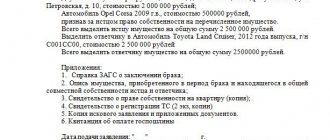A simple way to protect yourself from an unscrupulous insurance company
In the event of an accident, every driver who has an MTPL policy has the right to receive compensation from the insurance company. But in some cases, the insurance company may demand that the person at fault for the accident return the money that was paid to the victim (for example, if the driver at fault for the accident was drunk or fled the scene of the accident).
The right of the insurance company to demand that the person responsible for the accident return the money is called recourse, and the instrument of recourse payments itself was invented to punish unscrupulous drivers.
In practice, insurers often inflate the amount of recourse claims and ask to return even the money that they did not pay to the victims. We explain how to find out whether the insurance company has deceived you and how to reduce the amount of recourse if it has deceived you.
In what cases are regressive claims possible?
Regressive claims are made in cases that are not recognized by insurance companies as insurance, i.e. The accident occurred as a result of the intentional unlawful actions of the culprit.
When demands for the return of compensation are made by the culprit:
- The vehicle insured provided false information when concluding the contract, which led to a reduction in the amount of the insurance premium;
- The person responsible for the accident did not have the right to drive a car, including if the driver’s license seemed expired;
- If there is no power of attorney to drive someone else’s vehicle;
- The cause of the accident was alcohol, drugs or other intoxication of the perpetrator;
- If the culprit fled the scene of the car accident;
- The culprit does not have the right to drive a vehicle, i.e. he was not included in the MTPL policy;
- If it is proven that the culprit deliberately provoked the accident;
- If the accident did not occur within the period specified in the insurance policy;
- If the culprit began repairing his damaged vehicle earlier than 15 days after the accident, when registering under the European protocol, and did not present the car to the insurer for inspection;
- If at the time of the accident the diagnostic card has expired;
- When a truck with a trailer was involved in an accident, but the MTPL agreement does not contain information about this possibility.
A regressive requirement for a service station is made in the case where it is proven that the diagnostic card did not include information about a vehicle malfunction that led to an insured event, if they could have been identified during a technical inspection.
It turns out that the service station will have to pay if the inspection was performed poorly.
Features of compensation for damage through subrogation
One of the features of compensation for damage by subrogation is that when replacing a creditor, the original creditor must transfer to the insurer all documents related to the right of claim, as well as provide all the necessary information so that the insurer can claim compensation.
Also, the property insurance contract cannot contain a clause canceling the insurer’s subrogation right, since it is established by law. Such a condition will be considered void.
In addition to the provisions of the Civil Code, the provisions of Resolution of the Plenum of the Supreme Court No. 58 also work in the field of compensation for damage by subrogation. According to them, for example, an insurer under CASCO (voluntary comprehensive property insurance of a car) can pay the victim compensation that exceeds the amount of payment under compulsory motor liability insurance.
In this case, the insurance company may recover damages through subrogation from the insurance company responsible for the accident. The amount of recovery will be limited to the amount of payment under compulsory motor liability insurance that the relevant insurance company should have made.
The relationship between the insurer and the debtor will be governed by the same rules of law that would govern the relationship between the original creditor and the debtor.
Certain types of property insurance contracts are regulated by other legislative acts, which may slightly change the terms of compensation for damage through the procedure of subrogation.
Correct actions for regressive requirements and common mistakes
If the insurance company has made regressive claims against you, proceed as follows:
- Make sure your case allows this by law;
- Check the correspondence of the amounts, how much was paid to the victim and how much the insurance company requires to be reimbursed in the order for payment;
- If you do not agree with the amount of payment, send a substantiated return claim to the insurer;
- Do not sue the insurance company yourself, wait for the insurance company to do it.
It is a mistake to try to ignore what is happening. If you do not fully understand the current situation, do not act on your own; it is better to contact professional lawyers for advice.
How insurance companies deceive drivers during recourse
The classic scheme by which insurance companies deceive their clients looks like this. To make it clearer, let's introduce several characters.
Alisher is an insurance client.
Boris is an insurance client.
The accident was the fault of Alisher, and he was drunk at the time of the accident.
After the accident, Boris contacted his insurance company. He was paid insurance - 30 thousand rubles. Boris did not agree with the amount of compensation and turned to an independent expert, who confirmed that the damage caused to the car was estimated at 50 thousand rubles.
Through the court, Boris received the missing 20 thousand rubles from Beta.
After Beta paid Boris the first 30 thousand, it sent Alpha a demand to return the money. Since the accident was the fault of Alisher, Alpha returned the money.
When Beta paid Boris another 20 thousand, she sent information about the payment to Alpha. Moreover, according to the law, “Alpha” no longer has to return these 20 thousand to “Beta”. Insurers do not have the right to underestimate payments to clients, and if they did underestimate and the client was able to prove it, the insurance company must pay the rest of the money out of its own pocket.
And then the fun begins.
“Alpha” sends Alisher a demand to return the 50 thousand that “Beta” paid to the victim. Attached to the request are all receipts confirming that Beta returned exactly 50 thousand. Of course, the insurance company modestly keeps silent about the fact that Alpha itself paid Beta only 30 thousand.
Since Alisher was drunk at the time of the accident and knew that he absolutely fell under the article of recourse, he, without any doubt, pays 50 thousand to Alpha.
Result: Alisher paid Alpha 20 thousand more than he should have, and did not even realize that he had been deceived. Satisfied, Alpha credited the money to their accounts and continued to steal from unsuspecting clients.
In the newsletter we teach readers what other ways to protect themselves from the insurance company. To subscribe, enter your email on our website. Once a month we review one request, provide detailed advice and send action instructions by e-mail. Only for subscribers.
Answers on questions
| How much regressive claims can the insurance company make? | Recourse claims are made in the amount paid as damages. |
| Is it possible to file an objection to a recourse claim, to challenge the calculation of losses under compulsory motor liability insurance? | Yes, in a lawsuit. |
| Is it possible to partially waive the claim? | If the amount of claims is overestimated, or the calculation provided by the insurance company was made in violation of the methodology of the Central Bank of the Russian Federation, the claim can be recognized only in the justified part. This is proven in court. |
What is regression in MTPL insurance?
Let's consider part 1 of article 14 of the Federal Law “On Compulsory Motor Liability Insurance”:
1. The right of claim of the victim against the person who caused the harm is transferred to the insurer who provided the insurance compensation in the amount of the insurance compensation provided to the victim if:
Thus, a recourse claim is the right of the insurance company to demand compensation for damages from the driver responsible for the accident.
2 more ways to challenge regression
They are even less likely for your case, but they are still worth paying attention to.
Limitation of actions
In Russian legislation in 2021, it is 3 years (Article 196 of the Civil Code). And the beginning of this period is not an accident at all, but, according to Part 3 of Article 200 of the Civil Code of the Russian Federation, the moment when the main obligation is fulfilled, which is payment under compulsory motor liability insurance to the victim.
Why exactly the payment? Judicial practice thinks so. Here is one of the decisions where the judge explained why it is incorrect to consider the date of the accident as the beginning of the limitation period.
5 working days or calendar days?
Often, the legality of a recourse claim under compulsory motor liability insurance from the insurance company depends on the answer to this question. It happens that you managed to send the European protocol form, but later than 5 days. And here it is important to understand that the law gives exactly 5 working days for this, not counting official weekends and holidays.
What should you do if the insurance company demands compensation from you through subrogation?
If you are the culprit and it was because of your actions that the insured event occurred, after paying compensation to your creditor, the insurance company will send you a claim, which will set a deadline for fulfilling the obligation. If for any reason you do not fulfill it, the insurer will go to court to collect it.
It is not recommended to ignore the claim; you should respond with a letter (preferably registered with a list of attachments) stating the reasons for your refusal or inability to pay. Perhaps the insurance company will accommodate you and, for example, provide an installment plan. In any case, the fact of your silence will affect you in court.
If the case goes to court, then you can try to prove the absence of a cause-and-effect relationship between your actions and the occurrence of the insured event, that is, deny your guilt. But if you have already compensated the insurance client for the damage directly, and the organization continues to demand money from you, you will need to provide a document confirming the fact of payment.
Therefore, we strongly recommend that you take a receipt from the lender for receiving the money and, if possible, have it certified by a notary. You can also try to challenge the very fact of the occurrence of an insured event. As judicial practice shows, even if there are objections from the plaintiff, the court will conduct an investigation into this fact.
Summarize. Subrogation is a type of replacement of a creditor in an obligation without changing the obligation itself. Applicable in cases of property insurance, it releases the debtor from all obligations to the original creditor. It differs from assignment in that it is forced, and from recourse in that it does not give rise to a new legal relationship.
Sources:
Transfer of the insured's rights to compensation for damage to the insurer (subrogation)
Transfer of creditor's rights to another person on the basis of law
How to find out how much the victim was paid
By way of recourse, only compensation actually paid to the victim can be recovered. If a referral for repairs to a service station was issued, this amount will be determined according to the agreement with the car service center, the work order. If the insurance company has filed a recourse claim, you can find out about the compensation actually transferred in the following ways:
- by written or oral contact to the insurer at the stage of pre-trial dispute resolution;
- by requesting insurance case materials in a lawsuit (if the insurer did not immediately attach them to the claim);
- by conducting an independent examination through an appraiser (if you have a report on a previously conducted examination).
Information about the actual compensation paid should always be in the insurance file. If such documents are missing or are in doubt, the insured-victim can be summoned to court . If you receive an SMS from an insurer, a claim or a recourse claim, immediately contact a lawyer for advice. Only in this case can you challenge the insurance claims and choose the best protection option.
Subrogation for liability insurance
Subrogation in liability insurance is the subject of much discussion and, as practice shows, including judicial practice, it still remains a poorly understood subject. In this connection, I bring to your attention a small study of this issue.
As is known, liability insurance in civil law is divided into:
- Liability insurance for causing harm (non-contractual liability or tortious) (931 Civil Code of the Russian Federation).
- Insurance of liability for breach of contract (contractual liability) (932 Civil Code of the Russian Federation).
Let's consider cases of the possibility of subrogation for each type of liability insurance.
1. Tort liability arises when someone is injured by their own actions, such as accidentally flooding their neighbors downstairs, damaging someone's car in an accident, or damaging cargo they are transporting through their own fault. This type of insurance is regulated by Art. 931 Civil Code of the Russian Federation:
In accordance with Part 1 of Art. 931 of the Civil Code of the Russian Federation “Under an agreement to insure the risk of liability for obligations arising as a result of causing harm to the life, health or property of other persons, the risk of liability of the policyholder himself or another person who may be assigned such liability may be insured.”
That is, an insured event under such a contract is the occurrence of liability either by the policyholder himself or by the persons insured by him as a result of causing harm to third parties. For the possibility of subrogation, in accordance with Part 1 of Art. 965 of the Civil Code of the Russian Federation, it is necessary for the policyholder to have a right of claim, which will have to pass to the insurer. What right of claim does the insured have in this case and to whom does he have the right to make a claim for compensation for damage? Obviously, only to himself. In turn, the right of claim against oneself is the coincidence of the debtor and the creditor in one person, and entails, as is well known, the termination of the obligation. The insurer also has an obligation to compensate the victim for damage. Accordingly, apart from the obligation to compensate for damage to third parties, nothing else can pass to the insurer.
However, it may be objected that in Art. 965 of the Civil Code of the Russian Federation we are talking about the transfer to the insurer of rights not only from the policyholder, but also from the beneficiary, who under insurance contracts of any liability is always the victim. Let us suppose. Then the right to claim from the beneficiary to the insured is transferred to the insurer. However, subrogation to the policyholder is impossible, since in this case the insurer has not fulfilled the obligation to protect the property interests of the policyholder. I already wrote about this here.
Accordingly, the conclusion is: the right that passes to the insurer when insuring tort liability, by way of subrogation, is absent and, therefore, subrogation is impossible .
2. The second type of liability insurance is liability insurance under a contract, which, as is known, is allowed in cases provided only by the Law: Part 1 of Art. 932 of the Civil Code of the Russian Federation “Insurance of the risk of liability for breach of contract is permitted in cases provided for by law .
, only the risk of liability of the policyholder himself can be insured . An insurance contract that does not comply with this requirement is void.”
Based on this norm, only the personal liability of the policyholder is insured. When contractual losses are caused, the insured must compensate the counterparty for failure to fulfill the obligation, but if the direct culprit in causing the losses is not the insured, but some third party, does the insurer have the right, after paying compensation, to make a subrogation claim against this person? Let us consider, for example, the following situation: the policyholder, who has insured his contractual liability, suddenly, due to the fault of a third party, becomes liable. The right of claim that he may have is the right of recourse (reverse) claim against the direct cause of harm, which will arise for the insured only after he has compensated for the damage.
In turn, this right is transferred to the insurer by way of subrogation only after the insurer has paid the insurance compensation, as is expressly stated in Art. 965 of the Civil Code of the Russian Federation. But if the insured, and not the insurer, paid for the loss, where will the insurer get the right to subrogation?
If the insurer made the payment to the injured party, then no right can pass to the insurer, since the insured has no right of recourse, he did not pay anything to anyone, the insurer did it for him. And as we remember, the right of recourse arises only after compensation for losses.
However, as I already wrote, the right of claim passes not only from the insured, but also from the beneficiary, that is, from the injured person, and in this case, the injured person, as usual, will have any claims only against the insured. And subrogation to the policyholder is impossible.
3. If the liability insurance contract was concluded in violation of Art. 932 of the Civil Code of the Russian Federation and under such an agreement subrogation claims were presented to a third party, then in this case Part 2 of Art. 168 of the Civil Code of the Russian Federation, in accordance with which “A transaction that violates the requirements of a law or other legal act and at the same time encroaches on public interests or the rights and interests protected by law of third parties is void unless it follows from the law that such a transaction is contestable or other rules must be applied.” consequences of a violation not related to the invalidity of the transaction.”
It follows from this that the conclusion by the Insured and the Insurer of such an agreement and the presentation of subrogation or recourse claims to third parties directly infringes on the property interests of these same third parties, and accordingly is void. And if so, then in this case neither recourse nor subrogation is possible.
Thus, in any case, subrogation under a liability insurance contract is impossible due to the absence of a transferable right.
Euro protocol and regression – what does the 2021 law say?
Regression is, first of all, a right. In our situation, the insurance company has the right to recover the money paid to the victim for failure to fulfill the obligations of the culprit in cases established by law. We have already examined in detail the issue of how to properly notify your insurer to the culprit. It's time to figure out what to do and what to do if you didn't do this at all or didn't manage to send the notice on time.
If you have not submitted the European OSAGO protocol to the insurer within 5 days, drawn up in case of an accident, and the insurance contract itself was concluded before May 1, 2021, then the law is on the side of the latter. Let us imagine in the form of a logical chain where such a right arises for an insurance organization:
- clause 3.8 of the Insurance Rules obliges the culprit to send his notification form within 5 days to the insurance company with which he entered into an MTPL agreement; this is also prescribed by the Federal Law on Compulsory Motor Liability Insurance FZ-40 in paragraph 2 of Article 11.1;
- If this is not done, then the insurer is given the right of recourse for failure to notify under subparagraph “g” of paragraph 1 of Article FZ-40, but only if the MTPL policy was purchased before May 1, 2021.
Judicial practice in cases of recourse under compulsory motor liability insurance
Submission of recourse claims is carried out in court. Collection of payments from the driver is possible only on the basis of a court order.
Judicial practice on this issue has been formed and is actively used when considering the case on the merits.
If there are grounds for a recourse claim and there are no violations by the insurer, the claim will be satisfied. Despite the large size of claims, courts often reduce the final amount of payments, citing their unreasonable overestimation.
Not in all cases, the insurance company meets halfway the person at fault in the accident. By protecting his interests, he can force the offending driver to compensate for his risks. Therefore, this topic is relevant for all car owners.
Having received a recourse under compulsory motor liability insurance, do not despair. Do not pay until you wait for a court decision; practice shows that you can reduce the amount of compensation or avoid payment altogether.
I have received a recourse claim – what should I do?
First of all, assess the situation and understand whether you submitted the European Protocol notification form to the insurance company. Even if you sent the document to the insurer and managed to do it within 5 days, this does not mean that the insurance company will not sue you for anything - you must have evidence of acceptance of the notice. And these are:
- a copy of the European protocol with a stamp with the incoming number or an insurance seal on acceptance with a date no later than 5 days,
- video recording of the presentation,
- check and a copy of the return receipt from the post office, if you sent it by mail.
If you simply forgot to submit the European protocol to the insurer or simply did not know about such an obligation, then you should not simply leave it to chance. Most likely, to protect interests, it is better to resort to the help of a representative - a lawyer who, according to reviews, will be able to “pull out” the case, relying on the correct legal acts and convincing the judge with consistency.
How can you reduce your payment amounts?
The insurance company can make claims for any amount. This often results in overestimation. The final price of a claim consists of several components, so you need to study:
- act on the occurrence of an insured event;
- expert opinion on the amount of damage caused;
- information about the cost and procedure for car repair work.
Typically, when making calculations, insurers do not take into account the age of the vehicle or natural wear and tear. The cost of repairs and parts is also quoted at the highest prices.
How to avoid recourse from the insurance company
Let's look at how to avoid recourse or reduce its amount. The insurance company can set any claim price, but the driver will be obligated only for the part that is satisfied by the court.
Approximate procedure:
- Gather all the evidence to defend your position. Any materials and documents received in the period before filing a claim will be useful.
- Check the legality of the insurance company's requirements in accordance with the norms of Federal Law No. 40-FZ. Pay attention to the statute of limitations, which should not exceed 3 years.
- Compare the amount charged by the insurer to the amount of payment made. It should not exceed it.
- Ask for evidence of all the facts cited by the insurance company. Often, insurers do not verify information and file claims without any basis.
The 2 most common grounds for refusing to satisfy a claim should be examined separately.
Challenging the legality of payments
To make a claim, the insurance company must have grounds and evidence. If you manage to discover errors made in the documents drawn up, you can immediately recognize the actions of the insurer as illegal. It is best to give a copy of the claim to a lawyer and ask for advice.
Contesting guilt
The driver is found guilty of an accident based on a decision by a traffic police officer or a court decision. In practice, insurance companies make a recourse claim, citing a protocol on an administrative offense, which does not prove guilt.
Article on the topic: Checking the MTPL policy by VIN and state number
If during the trial it is possible to prove that the incident was not caused by the driver, the filing of claims against him will become unfounded.
It is impossible to unequivocally answer the question of how not to pay recourse to the insurance company. Within the framework of a specific case, a detailed consideration of all the details is necessary. If you lack experience and special knowledge, it is recommended to seek help from qualified lawyers.
Regression and subrogation - similarities and differences
In Russia, recourse and subrogation are not identical concepts, although they have many common features. They are even regulated by different rules of law. The concepts are similar, but the mechanism is completely different.
In case of subrogation, the damage caused to a person by the actions of the culprit must be compensated by this culprit or by the insurance company that insured his risks. Accordingly, the culprit compensates for losses not covered by the MTPL policy to the victim’s insurer.
Example : Two drivers A and B had an accident. At the same time, driver A has a CASCO policy, and driver B has an MTPL policy. Driver B., who has an MTPL policy, is to blame for the accident. A.'s damage was estimated at 450,000 rubles. Driver A's insurance company fully compensated him for his losses, and appealed to B's insurance company for expenses. According to the MTPL policy, the company of driver B. reimbursed 400,000 rubles, as required by law. and the remaining 50,000 rubles under subrogation were paid by the culprit of the accident, B.
And with recourse, one obligation is simply replaced by another, while the right does not transfer anywhere. In case of recourse, the culprit of the accident must reimburse his insurer for the expenses incurred in the form of paid insurance compensation.
Example : Driver A., who has an MTPL policy, hit driver B.’s car, and then fled the scene of the accident. The culprit of the accident is driver A. The damage caused to driver B is 150,000 rubles. The insurance company of driver A. paid the losses to driver B., after which the insurer legally had a recourse claim against driver A., who fled the scene of the accident. Driver A. reimbursed the insurance company 150,000 rubles in court.
It is clear that a recourse claim can be made by the insurance company of the person injured in the accident, and subrogation can be filed by the insurance company of the person at fault for the accident. Collections occur for various reasons and claims are brought against different categories of drivers. Moreover, in both cases, losses are recovered from the culprit of the accident in court.








